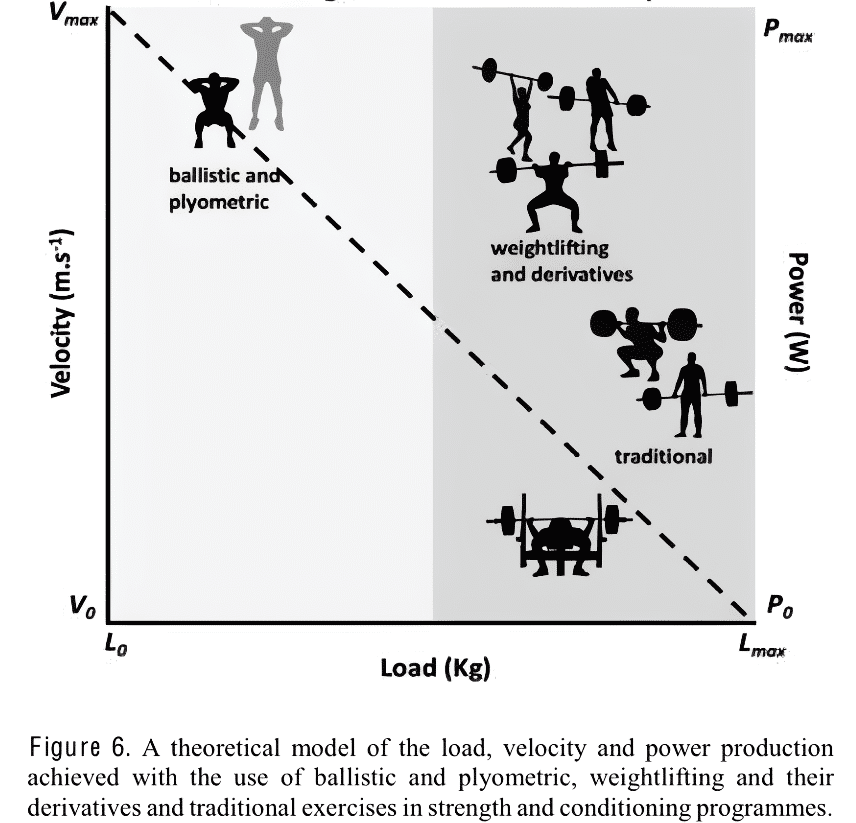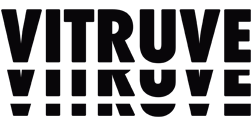17 de July de 2024
Application of VBT in Olympic Weightlifting and variations for team sports
Introduction
The snatch and the clean and jerk (C&J), the two lifts performed in Olympic weightlifting competitions, are technically complex movements requiring high levels of strength, power, and agility. Weightlifters demonstrate exceptional peak power outputs during these lifts, surpassing those reported in other sports (Ho, Lorenzen, Wilson, Saunders, & Williams, 2014). Olympic weightlifting is a highly neurologically demanding sport, requiring athletes to execute movements with precise motor control and maximal intentional speed to lift heavy loads rapidly (Morris, Oliver, Pedley, & others, 2022). These characteristics make Olympic lifts a valuable tool for enhancing athletic performance in disciplines demanding strength, power, and agility.

Biomechanical elements of Olympic weightlifting
The snatch and clean can be subdivided into three components that, individually, have distinct adaptation benefits. The first pull consists of removing the barbell from its static position on the floor until the bar is above the knees. In this component, the angle of the torso to the floor is more horizontal than vertical, and this position allows the lifter to apply high levels of force. Pulling the bar from the floor therefore contributes to starting strength training, i.e., the ability to generate high forces from the beginning of muscle activation in a very short period. In a team sport, starting strength is expressed in a multitude of situations that require explosive gestures with a standing start, such as the initial defensive positions for sports such as football and volleyball.
The second phase of the lift, often called the ‘Turnover’, focuses on explosively repositioning the barbell. When the barbell rises above the knees, a movement is triggered that repositions the barbell-lifter system so that it has advantageous leverage to quickly impart a large force to the barbell, resulting in high power production. This phase (involving the end of the first pull and the beginning of the second) adds a plyometric element to the gesture in which the ability to quickly reverse the movement from eccentric to concentric contributes to the development of reactive force. As highlighted by a recent meta-analysis (Garhammer, 1993), thanks also to the plyometric and high-power component, Olympic lifting is perfectly suited to the multiple demands of team sports such as jumping, change of direction, and sprinting skills, allowing them to be improved.
Unlike the snatch where the technique requires the barbell to be lifted from the floor to a straight-arm overhead position in one continuous movement (Garhammer, 1989), in the Clean and Jerk at the end of the second pull the lifter stands up from a squat position, maintaining the bar on the shoulders until the exercise is finished or he or she starts to prepare for the jerk. The jerk begins with bending the knees, followed immediately by a quick extension. In bringing the barbell from the shoulders to the top in the jerk, a similar power is imparted to the barbell as in the second pull of the snatch and the clean. The reception of the barbell overhead in the jerk is similar to that of the snatch, except that in the clean and jerk, greater loads can be lifted.

Figure 1: barbell speed profile during all phases of the snatch (figure by Ho LK et al 2014)
Velocity profile of Olympic weightlifting
All Olympic lifts and their variants such as the power clean/snatch, the hang clean/snatch, the block clean/snatch, and the deficit clean/snatch, have in common the “Ballistic” aspect, i.e., they are exercises that do not decelerate towards the top of the movement, as with the squat and deadlift, making peak velocity a determining aspect of their success. For this reason, measuring and monitoring the speed of the barbell while performing them becomes imperative!
The speed profile of the snatch from floor to completion has important characteristics associated with successful performance. In the starting phase, the inertia of the (loaded) barbell must be overcome, and the speed of the bar is slow (Chiu & Schilling, 2005). The transition phase requires that the athlete does not lose barbell speed to improve momentum transfer. Subsequently, force continues to be transferred. The maximum bar speed is reached during this second pull-up phase. Therefore, in snatch lifts, the peak velocity (Vpeak) of the bar for the entire lift occurs at the end of the second pull, when the bar has reached the hip and the body is in an extended position. In elite athletes, the Vpeak (1RM) of the bar was reported to be between 1.68 ± 0.03 m/s and 1.98 ± 0.09 m/s. For non-elite athletes who also only perform variations such as the power clean, power snatch, clean pull, etc., the velocities can vary greatly. This is due to the marked variation in technical competence and physical stature.
In general, non-competitive lifters in the power clean reach 1RM with peak speeds of 1.35-1.50 m/s and average speeds of 0.95-1.05 m/s. However, even among non-competitive lifters, taller athletes can achieve much higher speeds, even at 1RM.
For elite weightlifters, the importance of Vpeak for performance is widely accepted. The Vpeak during a maximal lift (1RM) in the snatch has been defined as the threshold velocity (vthres), the minimum velocity needed to successfully complete the lift. In general, vthres provides the required vertical distance and time of flight of the maximum barbell load at the end of the acceleration phase, which allows the athlete to squat underneath and catch the barbell in an overhead position. As a result, weightlifters with better technical skills in the rotation and grip phases can lift with lower levels of vthres.
Velocity Based training and Olympic lifting
Recent research has shown that weightlifting performance can be improved through increasing mechanical power, improving technical skills (vthres), and optimizing the Force-Velocity (FvR) profile. The good news is that all these variables including vthres (the minimum barbell velocity needed for a successful lift), can be monitored through a Linear position transducer.
Resistance training programs utilizing VBT to optimize the FvR profile have shown greater success than standard resistance training protocols. These VBT programs led to improved vertical jump height in trained athletes across various sports, including football, rugby, and futsal. In weightlifting, maximal performance hinges on an athlete’s neuromuscular ability to generate high power combined with refined lifting technique (e.g., rotation and grip phase).
Technical mastery and lifting effectiveness are reflected in the individual’s vertical threshold velocity (vthres). The vthres is the minimum peak vertical barbell velocity (vmax) that an athlete needs to successfully lift a maximal barbell load in an overhead position.

Figure 2: Theoretical model for athlete specific improvements in snatch performance (with kind permission from Sandau I, Granacher U 2023).
To date, velocity-based training is the scientifically best method of achieving maximum strength and power gains by monitoring the speed of the barbell. Due to the possibility of objective management of intensity (in terms of mean velocity or mean propulsive velocity), of volume (in terms of velocity loss), and in the case of Olympic lifts through Vpeak monitoring, VBT should also be adopted as the preferred method in Olympic lifting. The use of a scientifically validated (low-priced) device such as the VITRUVE is the best choice a coach can make to periodize, plan, and manage their athletes’ training.
By monitoring the lifts with the VITRUVE, it is possible to know the power and speed value of the barbell in real-time and objectively. For example, if the athlete manages to reduce the peak speed of a snatch with the same power output, it is likely they have improved their technical ability. Conversely, if they increase their power output with the same peak speed, they will likely be able to lift more weight. In addition, for more experienced athletes, training that aims to change the force-velocity profile towards an increase in peak force and power will contribute to further gains. These aspects can also be targeted for improvement by monitoring velocity loss. For example, exercises such as Olympic lifts or variations that aim to increase power should not suffer velocity losses of more than 10%. This is because a Vloss of 10% minimizes the problem of residual fatigue, allows the maintenance of optimal technique, and does not induce those molecular adaptations of a shift from IIx fibers (fast fibers) to IIA (intermediate fibers) that have been shown to result in higher velocity losses.
In addition, monitoring with an instrument such as the Vitruve allows for the monitoring of the athlete’s daily readiness. This assessment allows for a fine level of self-adjustment so that if the athlete is tired, making errors in technique, or needs to interrupt their series before excessive fatigue (loss of speed) sets in, the risk of injury can be reduced.
Furthermore, as figure 1 shows, the Olympic lifts (as well as all variants) are complex exercises that, when performed with high loads, can be lifted at a very high velocity. This is particularly relevant for the management of athletes in team sports where strength and power levels need to be maintained over long periods without the need to reach peaks. As shown in the below image from Marcos Soariano’s thesis, the Olympic lifts offer a stimulus that no other exercise can offer, and even when compared with loaded jumps, they cannot offer the levels of load moved in Olympic lifts at the same level of velocity.

(Marcos A. Soriano, 2020)
The good news is that using Vitruve allows both individual and group work to be optimized thanks to the possibility of using several devices at the same time and tracking the improvements of an entire team.
My final take
In general, Olympic lifts can be improved through increases in peak power, peak velocity, and an optimized velocity-force profile – all of which can be addressed by using the Vitruve as the optimal tool for implementing velocity-based training. Furthermore, Olympic lifts and their variants are extremely effective for athletes in team sports, as they express a multitude of skills, from starting strength to the shortening-stretch cycle to optimal power expression, all of which are required during different phases of a game. It is important to emphasize that the foundation of using Vitruve and VBT is consistent and dedicated training. As scientific research continues to progress rapidly in this area, we can expect an even more refined understanding of the key points discussed here.

- Ho LK, Lorenzen C, Wilson CJ, Saunders JE, Williams MD. Reviewing current knowledge in snatch performance and technique: the need for future directions in applied research. J Strength Cond Res. 2014 Feb;28(2):574-86. doi: 10.1519/JSC.0b013e31829c0bf8. PMID: 23719504.
- Morris, S.J., Oliver, J.L., Pedley, J.S. et al. Comparison of Weightlifting, Traditional Resistance Training and Plyometrics on Strength, Power and Speed: A Systematic Review with Meta-Analysis. Sports Med 52, 1533–1554 (2022). https://doi.org/10.1007/s40279-021-01627-2
- Garhammer, J. A Review of power output studies of olympic and powerlifting: Methodology, performance prediction, and evaluation tests. J. Strength Cond. Res. 1993, 7, 76–89. [CrossRef]
- Chiu, Loren Z.F. MS, CSCS; Schilling, Brian K. PhD, CSCS. A Primer on Weightlifting: From Sport to Sports Training. Strength and Conditioning Journal 27(1):p 42-48, February 2005.
- Pareja-Blanco F, Rodríguez-Rosell D, Sánchez-Medina L, Sanchis-Moysi J, Dorado C, Mora-Custodio R, Yáñez-García JM, Morales-Alamo D, Pérez-Suárez I, Calbet JAL, González-Badillo JJ. Effects of velocity loss during resistance training on athletic performance, strength gains and muscle adaptations. Scand J Med Sci Sports. 2017 Jul;27(7):724-735. doi: 10.1111/sms.12678. Epub 2016 Mar 31. PMID: 27038416.
